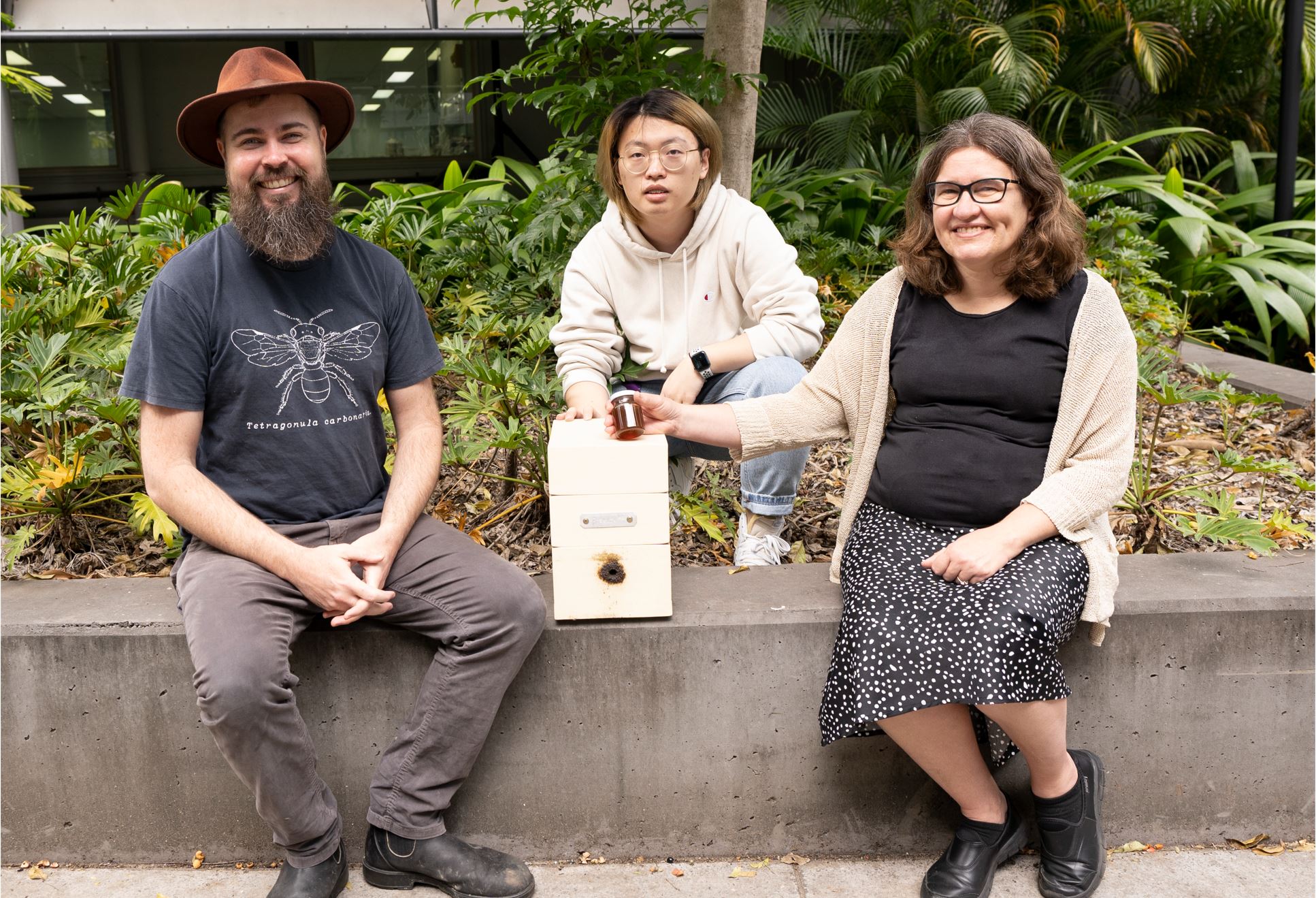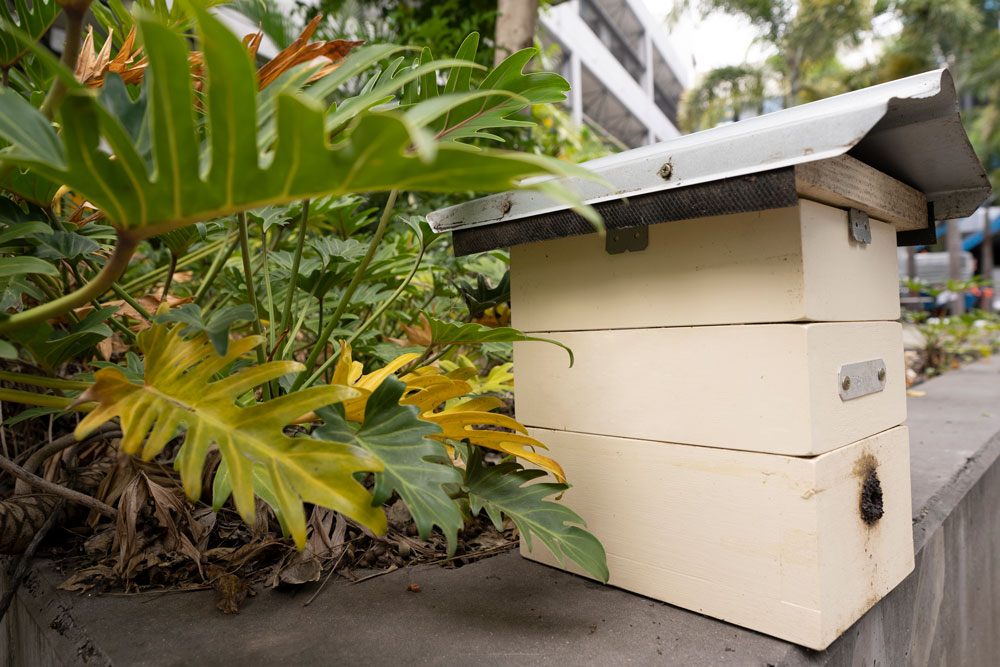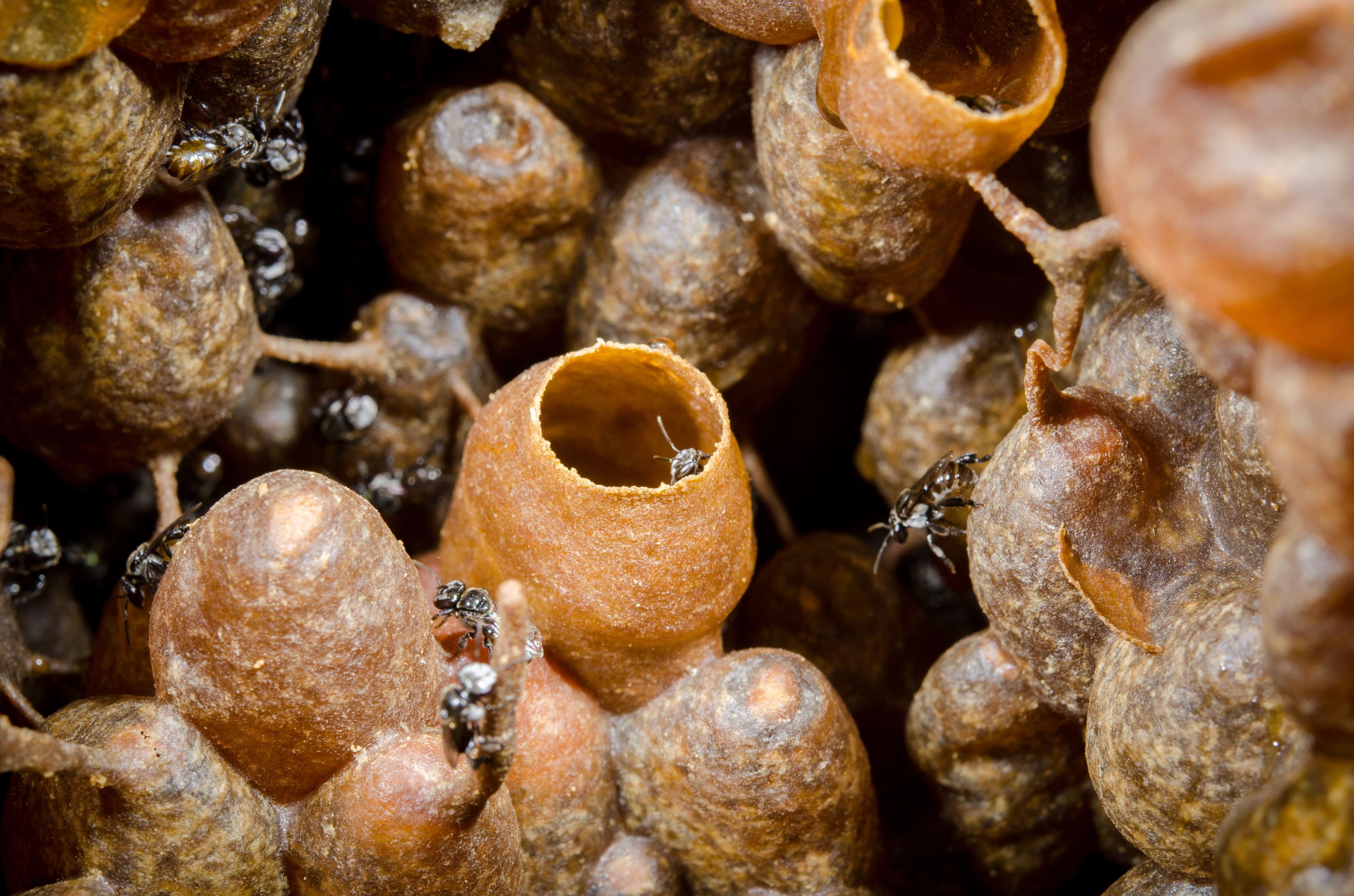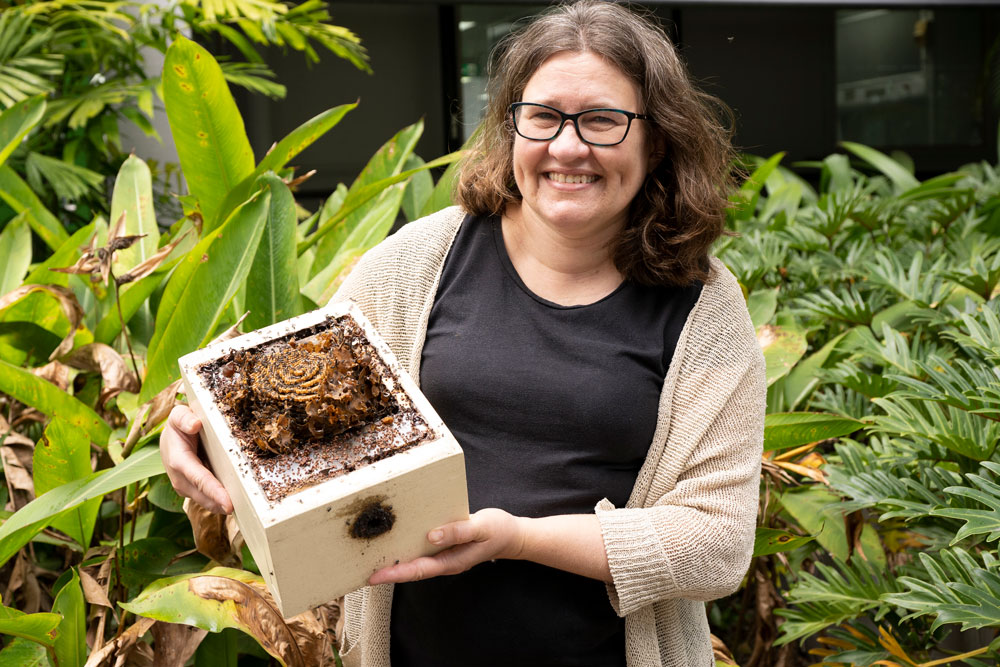The mystery of what creates the rare, healthy sugar found in stingless bee honey, has been solved by researchers at The University of Queensland, in collaboration with Queensland Health Forensic and Scientific Services.
The team found that the sugar trehalulose – which is not found in other honey or as a major component in other food – is produced in the gut of the bees.
UQ organic chemist and research leader, Dr Natasha Hungerford said the origin of this rare sugar had been a puzzle since the discovery of high levels of sugar trehalulose in stingless bee honey.

“We did not know if the trehalulose was coming from an external source – perhaps from native flora,” Dr Hungerford said.
“It could have been something in the resin from trees that stingless bees collect and take home to their nest - because unlike European honey bees, which store their honey in honeycomb made only from beeswax, stingless bees store their honey in small pots made from a mix of beeswax and tree resins.”

Stingless bees are found throughout tropical and subtropical parts of the world.
The larger, European honey bees (Apis mellifera) produce significantly more honey, and are the world’s major honey production species.
However, stingless bee honey which is highly prized as a specialty food, is noted in Indigenous cultures for its medicinal properties and attracts a high price.
“Trehalulose is more slowly digested and there is not the sudden spike in blood glucose that you get from other sugars,” Dr Hungerford said.
She said the UQ team was keen to determine if the trehalulose content in stingless bee honey could be increased, potentially making stingless bee honey more valuable.
“We fed confined colonies of the Australian stingless bee Tetragonula carbonaria the most common sugars found in flower nectar - sucrose, glucose and fructose.
“What we found is that stingless bees have a unique capacity to convert sucrose to trehalulose and produce honey rich in trehalulose in their gut.”

Native plants such as Grevillea and Banksia are believed to have nectar high in sucrose, and it is believed bees feeding from these plants will naturally produce honey rich in trehalulose.
The team also found that stingless bees fed a solution containing table sugar could convert it into a ‘honey’ containing high levels of trehalulose.
“But the ‘honey’ they produce from table sugar does not meet the requirements of real stingless bee honey which is made from nectar,” Dr Hungerford said.
“The honey we produced in the lab is in fact fake honey, and we were able to distinguish it from natural honey by isotopic testing.
“This trehalulose-rich syrup that was produced might be considered a potential secondary product of stingless bees, but it is not honey.

“It is also not good for the health of the hive to feed the bees only table sugar.
“Honey contains a complex range of phytochemicals from nectar, making it vitally important for brood rearing and the expansion of the colony population.”
The UQ team will now work to identify different horticultural crops that have nectar high in sucrose.
“We want to investigate the nectar sugars present in crops such as macadamia, lychee and avocado, and whether stingless bee pollination of these crops could result in a high level of trehalulose in their honey,” Dr Hungerford said.
The research was funded by AgriFutures Australia, Queensland Health, Department of Agriculture and Fisheries and the Australian Native Bee Association.
It is published in Journal of Agricultural and Food Chemistry (DOI 10.1021/acs.jafc.1c02859). https://pubs.acs.org/doi/10.1021/acs.jafc.1c02859
Contact: Dr Natasha Hungerford, E: n.hungerford@uq.edu.au, T: +61 403 879 064; Margaret Puls, UQ media E. m.puls@uq.edu.au, T: +61 (0)419 578 356.
Images are available to download from Dropbox via this link.
The Queensland Alliance for Agriculture and Food Innovation is a research institute at The University of Queensland, established with and supported by the Queensland Department of Primary Industries.



